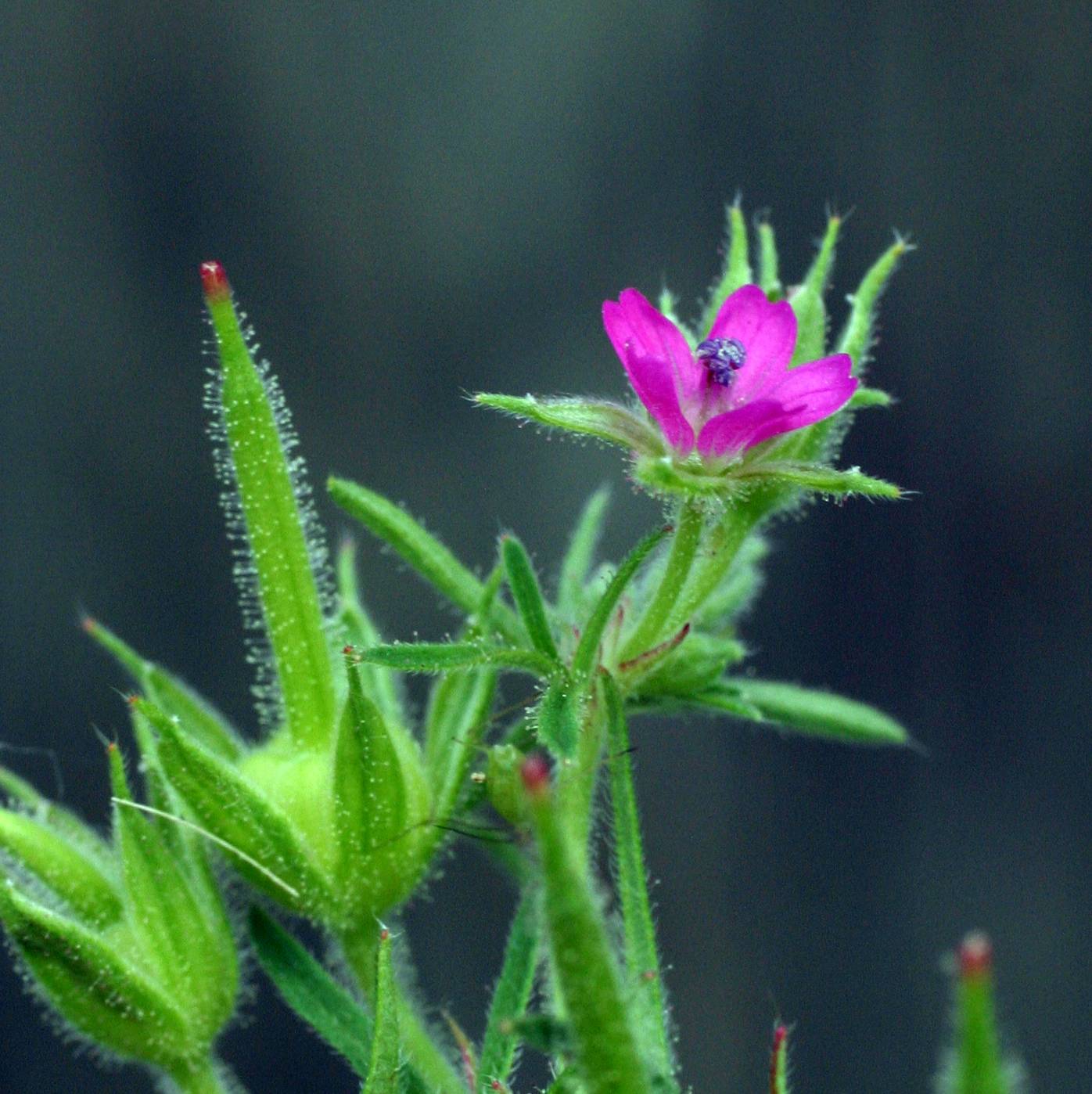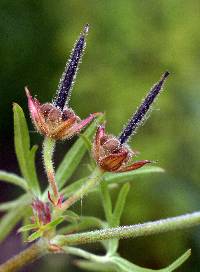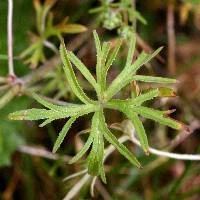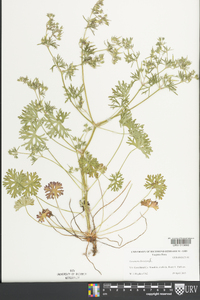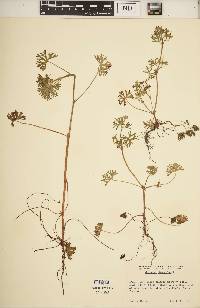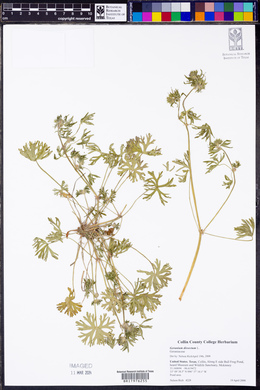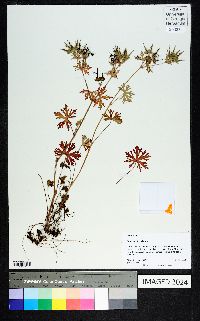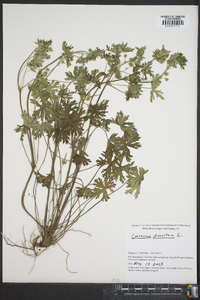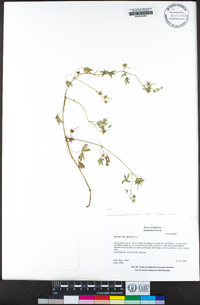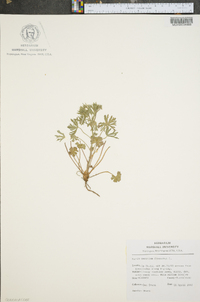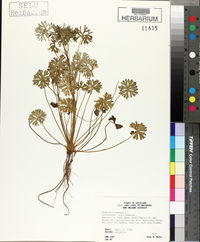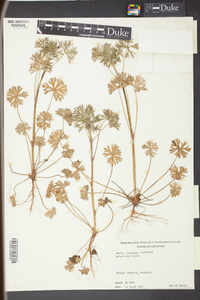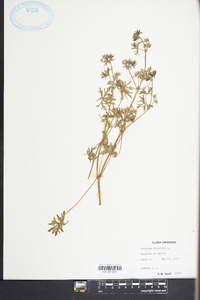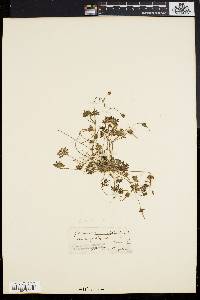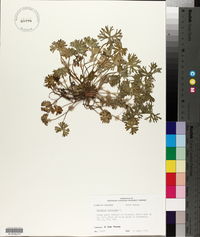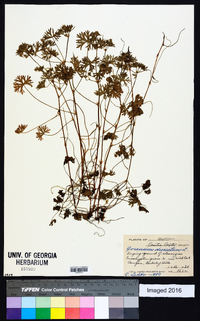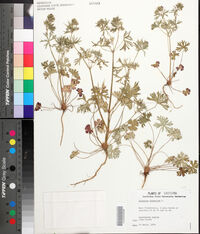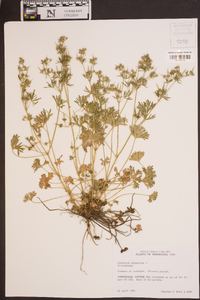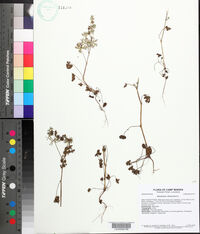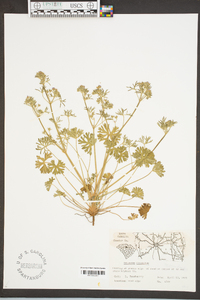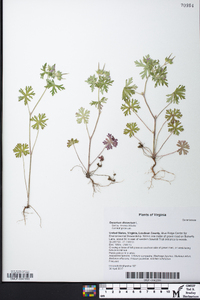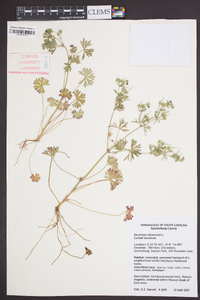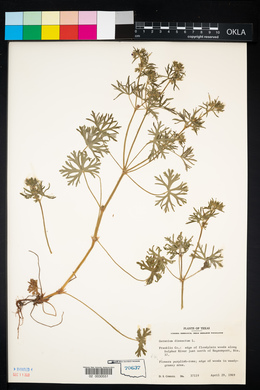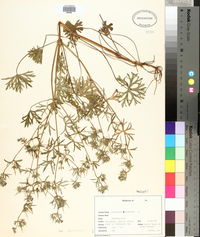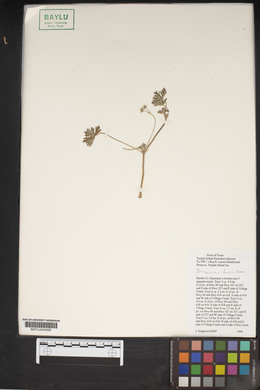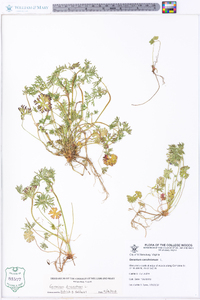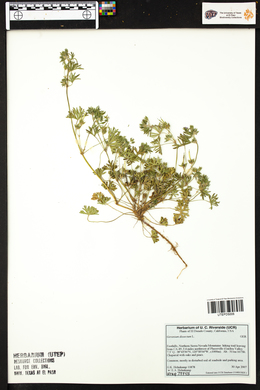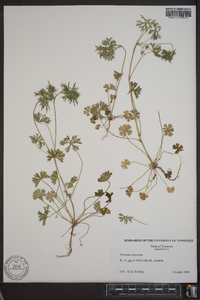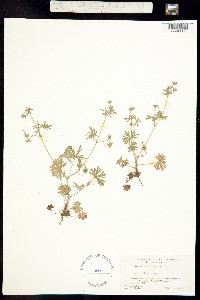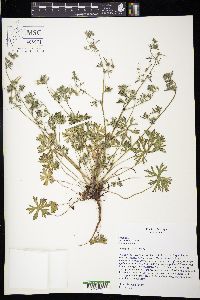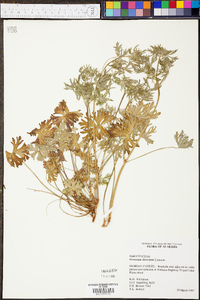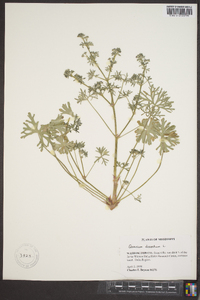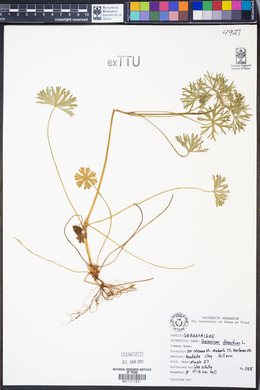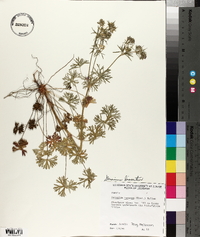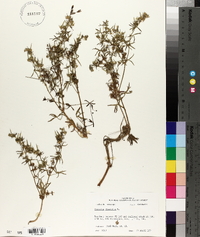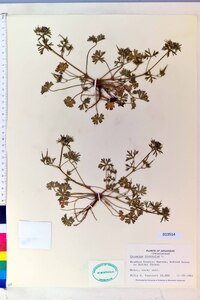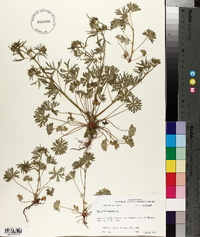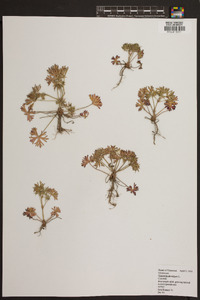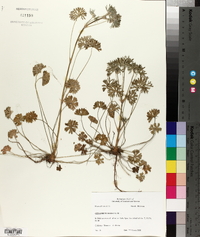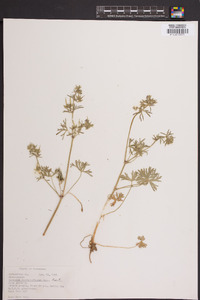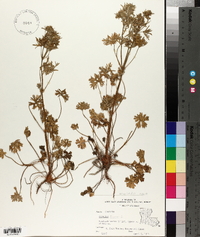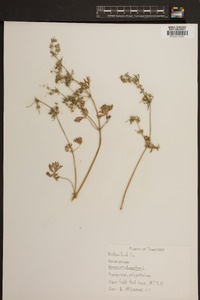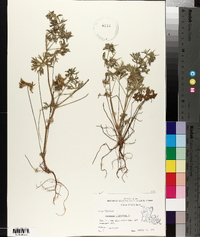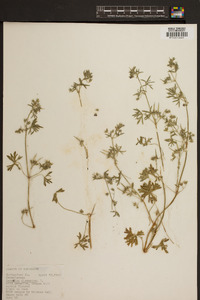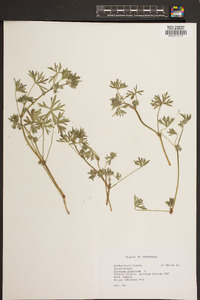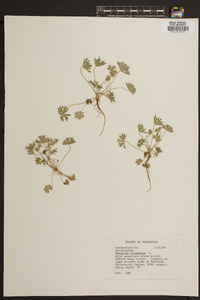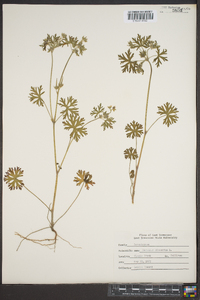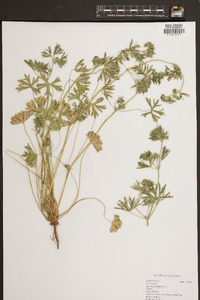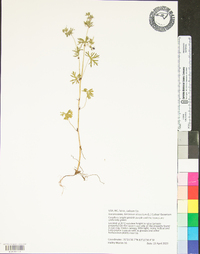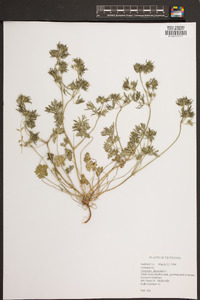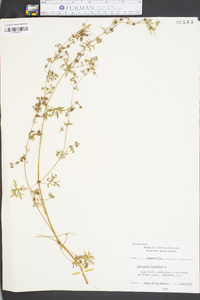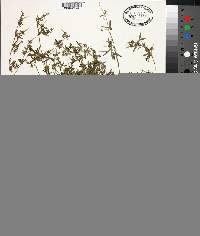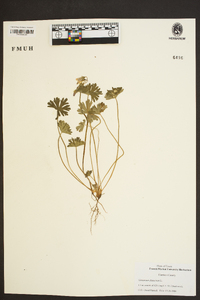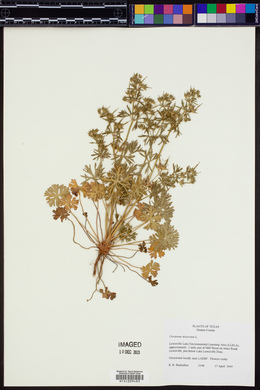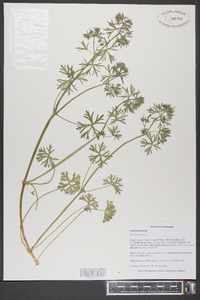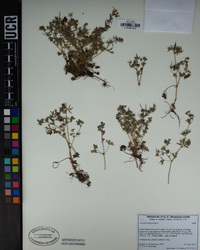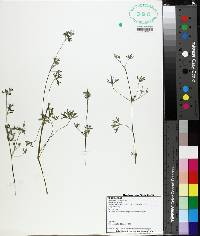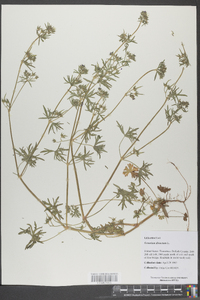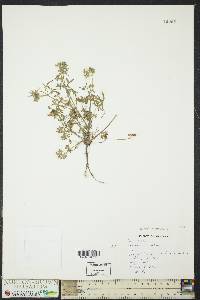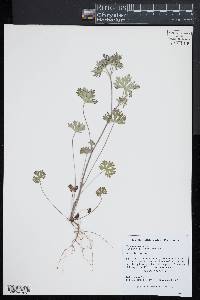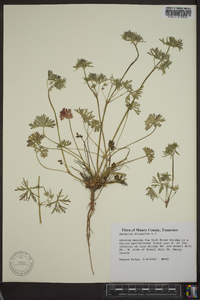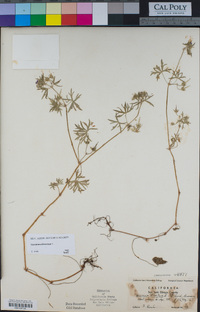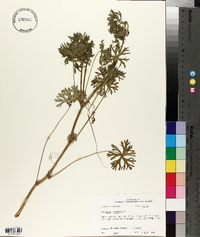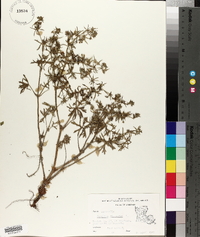
|
|
|
|
Family: Geraniaceae
Cut-Leaf Crane's-Bill, more...cutleaf geranium
[Geranium laxum Hanks] |
Spreading to erect annual to 6 dm, retrorsely to spreading-hirsute; lvs round-cordate, 2-6 cm wide, the 5-7 divisions from rather shallowly lobed (on the lower lvs) to incised- dissected into linear segments; pedicels commonly 2, subequal to the fruiting cal and peduncle; sep 4-5 mm, shortly awned, about equaling the retuse pet, elongating to 6-8 mm in fr; carpel-bodies with short, spreading, often glandular hairs ca 0.5 mm; seeds strongly reticulate-pitted; 2n=22. Native of Europe, intr. in our range from Mass. to Mich., s. to Ga. and Tex. Apr.-Aug. Gleason, Henry A. & Cronquist, Arthur J. 1991. Manual of vascular plants of northeastern United States and adjacent Canada. lxxv + 910 pp. ©The New York Botanical Garden. All rights reserved. Used by permission. Annual herb 10 - 60 cm tall Stem: spreading to erect, loosely branched, and covered with short, reflexed or spreading hairs. Leaves: opposite, stalked, 2 - 6 cm wide, rounded or heart-shaped in outline but five- to seven-lobed with lobes further lobed (lower leaves) or finely divided into linear segments (upper leaves). Flowers: purple, short-stalked (less than 8 mm), about 1 cm diameter, radially symmetric, and in pairs atop short, densely-hairy (sometimes glandular-hairy) axillary stalks, but combined stalk length shorter than subtending leaves. Sepals: five, alternate with petals, green, densely hairy (including some glandular hairs), 5 - 6 mm long in flower (elongating to 6 - 8 mm in fruit), with a short bristle at tip. Petals: five, purple, about 0.5 cm long, inversely egg-shaped with notch at center of the flattened to shallowly rounded tip. Next to the base of each petal there is a gland, thus making a ring of five glands alternate the petals. Stamens: ten in two series, all fertile, with filaments widened at base, and up to 1 mm long anthers. The ring of five longer stamens are aligned with the petals, while the five shorter stamens are alternate with the petals. Pistil: with a single, deeply five-lobed, superior ovary; one elongated style column; and five linear stigmas. Fruit: five, erect, spreading short-hairy (hairs 0.5 mm long, white, and often glandular), over 1 cm long, single-seeded, rounded base, beaked, nutlike segments surrounding remnant elongated style column of each flower. Each nutlike segment has a short beak at its tip, which is attached to the lower part of the style column, and then is pulled upwards by the coiling outer wall of the style column, yet stays attached to the entire fruiting structure and ejects the seed from the main body of the nutlike segment. Similar species: Geranium dissectum is somewhat similar to G. carolinianum but that species differs by having the flower stalks covered with long, spreading, non-glandular hairs; the petals are much more pale; and the nutlike portions of the fruit are covered with long (about 1 mm), ascending, dark hairs. This species is also very similar to other non-native, European species in our area such as G. columbinum, but it differs since it never has glandular hairs present on the flower stalks and sepals, the sepal bristle tips are much longer, and the fruit is hairless with a longer apical beak. Geranium sibiricum and G. thunbergii, are also similar, but both of those species are perennials with rhizomes. Additionally, the flowers of G. sibiricum are usually only single on the stalks, while in G. thunbergii the sepals are not bristle-tipped, and the apical beak of the fruit is much longer (up to 1.5 mm). Most of our other Geraniums either have larger flowers, compound leaves, no bristle-tips on the sepals, or have longer apical fruit beaks. Flowering: April to August Habitat and ecology: Introduced from Europe, known only from a single citation for Lake County, Illinois where it escaped into the edge of a prairie. Occurence in the Chicago region: non-native Author: The Field Museum |

